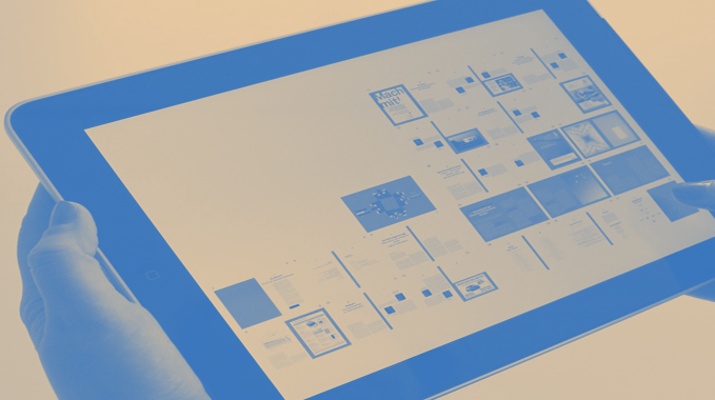9 Ways for Marketers to Win the Attention of Distracted Consumers

9 Ways for Marketers to Win the Attention of Distracted Consumers
Contributed ContentAlthough many subscribers quickly become inactive, you can still win their attention if you follow a proper re-engagement strategy. The main thing is to understand the needs of your audience and to offer high-quality, useful content.
When new website visitors subscribe to your emails, they are most engaged with your brand. Some of them may be excited about every email they get.
However, as time goes by, these consumers don’t pay as much attention to your emails and become inactive subscribers. Your emails remain unopened, and your subscribers ignore them. The number of inactive subscribers can affect your reputation.
Internet Service Providers (ISP) keep track of open rates, and if your rates fall, your emails will end up in the “Spam” folder. In addition, most marketers agree that winning back lost customers is easier than looking for new subscribers.
An average marketer loses 22.5% of their list every year. It may be very frustrating, given how hard you have to work to get new subscribers.
Fortunately, you can try to win them back if you show that you understand their needs.
Your subscribers may disengage for different reasons. First, they may receive too many marketing emails and consume too much marketing content every day so that they get distracted easily.
There are also people who subscribe to get special offers or gifts and forget about your brand after they receive what they want.
Why You Should Win Your Inactive Subscribers’ Attention
Inactive subscribers are still subscribed to your messages. They still make up a considerable part of your audience (up to 60%).
Many marketers prefer to get rid of inactive subscribers to keep their message deliverability high. Nobody wants their emails to be marked as spam by ISPs.
However, you shouldn’t forget about the financial side of this issue and the ROI of your campaign. A proper customer re-engagement strategy can save you money. If you re-engage your inactive subscribers, you can increase conversion rates and improve the overall quality of your email list.
It’s also important to understand the difference between re-engagement strategies and win-back email campaigns.
Emails intended for distracted subscribers are different from “win-back” messages because these emails are not trying to sell something at this point.
Meanwhile, win-back emails are intended to encourage your subscribers to make a purchase. Re-engagement campaigns are simply to make your inactive subscribers interested in your brand again.
The main purpose of re-engaging emails is to re-establish your long-term relationships with clients.
9 Tip on How to Win Back Your Inactive Subscribers’ Attention
1. Segment Your Audience
You should address two important issues. First, you must determine why your subscribers became inactive. Second, you should figure out how to meet their needs now. Their interests may be completely different than those when they decided to subscribe to your emails.

You may use various polls to understand user preferences, and you can also reach out to inactive subscribers personally.
Use data to connect this part of your audience to other factors and behavioral patterns. You may also match the list of inactive subscribers to the list of customer service calls. It will help you detect the most common problems.
2. Offer Immediate Value
When we open emails in our inbox, we don’t do it because we want to benefit the sender. The only reason we open emails is to see how what is inside can benefit us.
Your emails should offer something valuable besides your product. Don’t focus on your product or service only — it will make your emails annoying and uninteresting.
Instead, share useful information and various tips that will help your subscribers solve actual problems. This simple approach will help you increase email engagement naturally.
3. Address Existing Concerns
Sometimes, you know what the problem is and why your audience is pulling back. Perhaps, your product release has gone bad, or you have a PR problem.
You may also deliver content that does not resonate with your target audience.
If you know what the main problem is, don’t hesitate to acknowledge it and apologize.
4. Choose the Appropriate Tone
Marketing language might be not the best option when you don’t have much time and want to deliver an important message where you expect a certain reaction.
Rachel Jenkins, a digital marketing expert at Masterra, explains: “Our brains don’t remember anything that resembles a sales pitch. There are too many marketing messages around to focus on them. Thus, you should speak human. Build personal conversation, like if you were talking to a friend.”
Our brains don’t remember anything that resembles a sales pitch. There are too many marketing messages around to focus on them. Thus, you should speak human. Build personal conversation, like if you were talking to a friend.
Make your emails flow naturally. Your customers want to connect with a human rather than a robot. You should try to relate to your consumers through the language you use.
5. Make Your Emails More Personalized
Another way to get closer to your subscribers is to send personalized emails. Technologies, such as artificial intelligence and big data, allow you to tailor your content to the interests of a particular customer. However, you may start small and simply address each subscriber by his or her name.
Start by segmenting your audience and then import your subscribers’ names from a CRM database or spreadsheet. You can also include information from their purchasing history.
6. Use Direct Subject Lines
At the end of the day, it doesn’t matter how many subscribers read your emails, the most important thing is whether they take action or not. You may want to speak to a broader audience and make your subject lines general.
Below is a great example of an email that addresses a large audience, but also adds in a touch of personalization.

However, a good email should have a specific subject line that will clearly explain how your subscribers will benefit if they open and read it.
7. Offer Freebies
Offer your disengaged subscribers incentives that will motivate them to engage with your brand in different ways. You may ask them to click a link to get a coupon, or you can offer some free products if they follow your company on social media.
This method won’t bring you long-term results, but it’s a great first step towards restarting your relationships with customers.
8. Deliver High-Quality Content
It’s not enough to just send a couple of great emails. All your email content, as well as other content, should be well-written, informative, and relevant. When you offer good content, it draws attention by itself and keeps your subscribers engaged.
9. Use Gamification
The effectiveness of gamification is hard to overestimate. Did someone subscribe to your emails or buy your product?
If so, it means that they’ve unlocked a new achievement.
Use leaderboards and badges, encourage your audience to share certain content with you and reward the best content.
You can offer various challenges and your audience will be more interested in interacting with your emails.
Ensure You Retain Your Customers
Every marketer who cares about the ROI understands the importance of customer retention. Many people who purchase your product or service may forget about your brand after a while, but it doesn’t mean that you should also forget about them.
Quite the opposite, you can win them back if you create a proper re-engagement email campaign and follow our simple tips.
All you need to do is offer valuable and personalized content. Understand the needs of your audience and prove that your brand is worth their attention. Consult with a digital marketing agency if you have questions about how to better re-engage with consumers.
A proper re-engagement strategy can help you build long-term relationships with your customers, increasing ROI and conversion rates.
